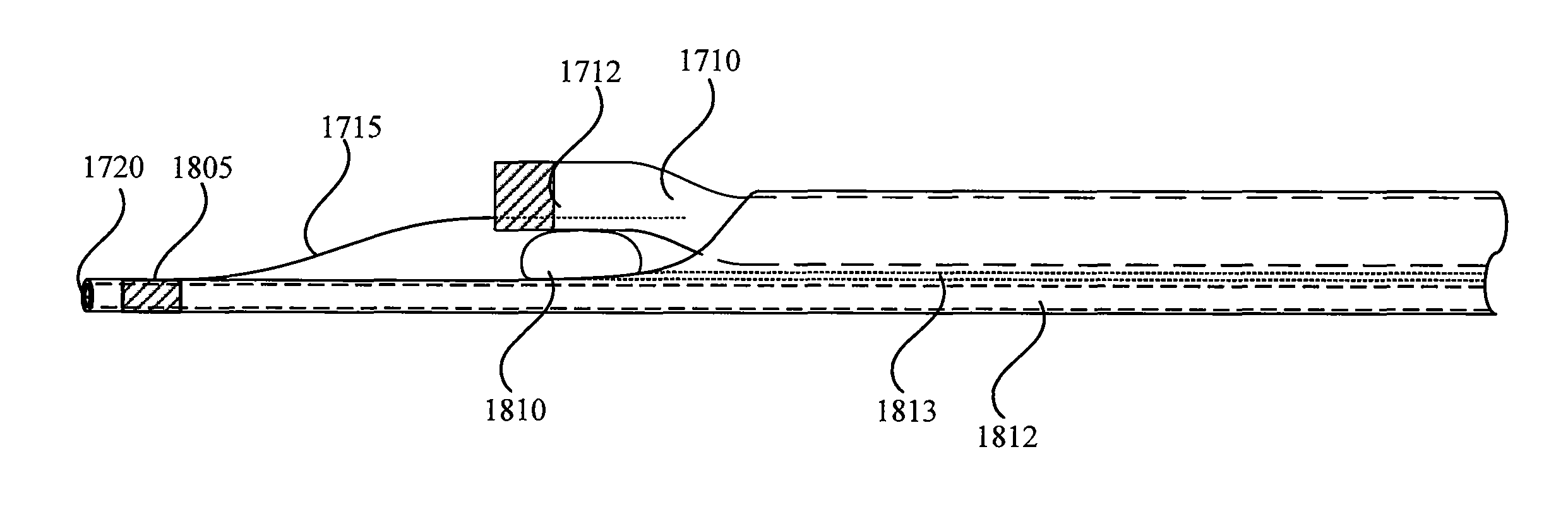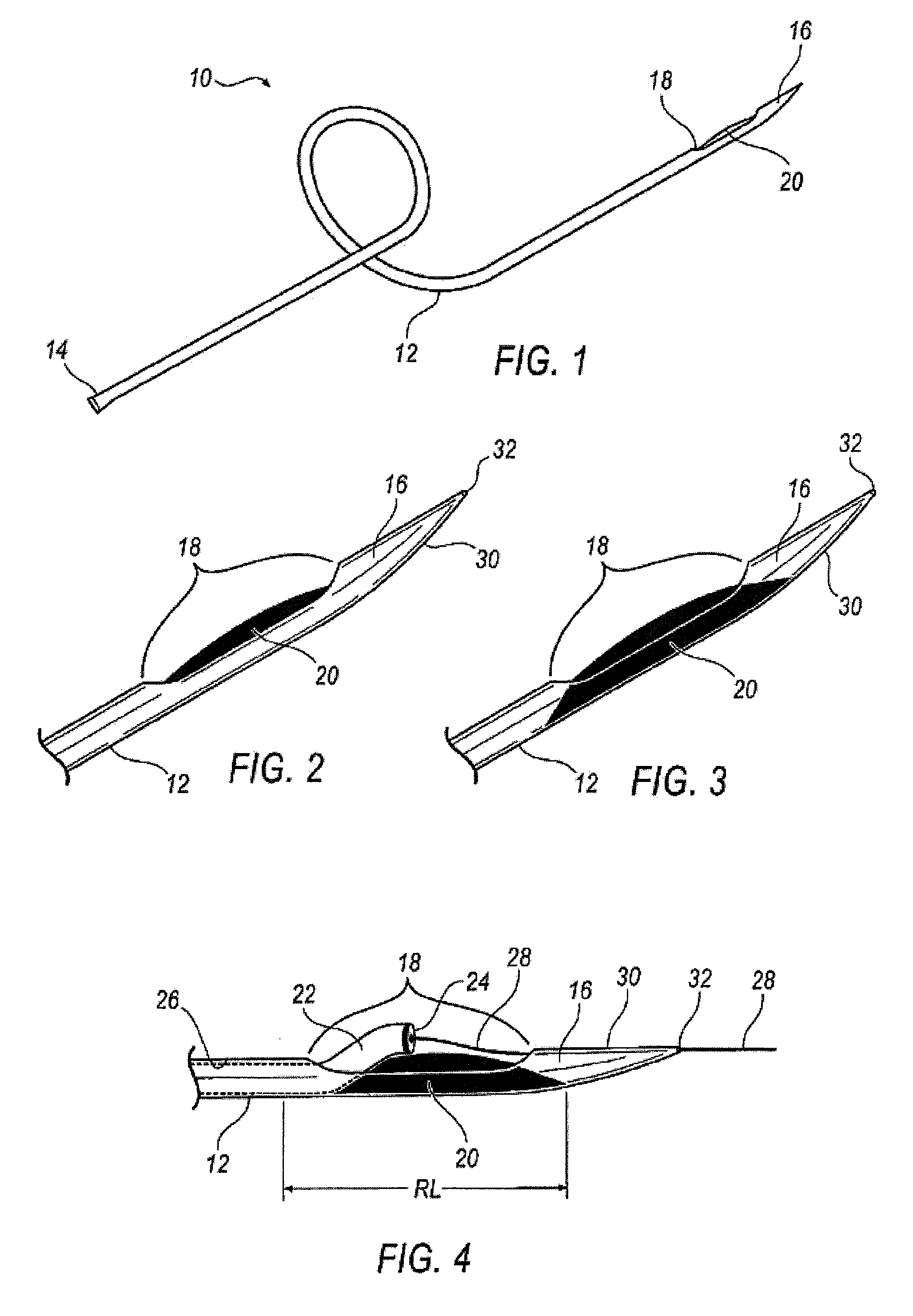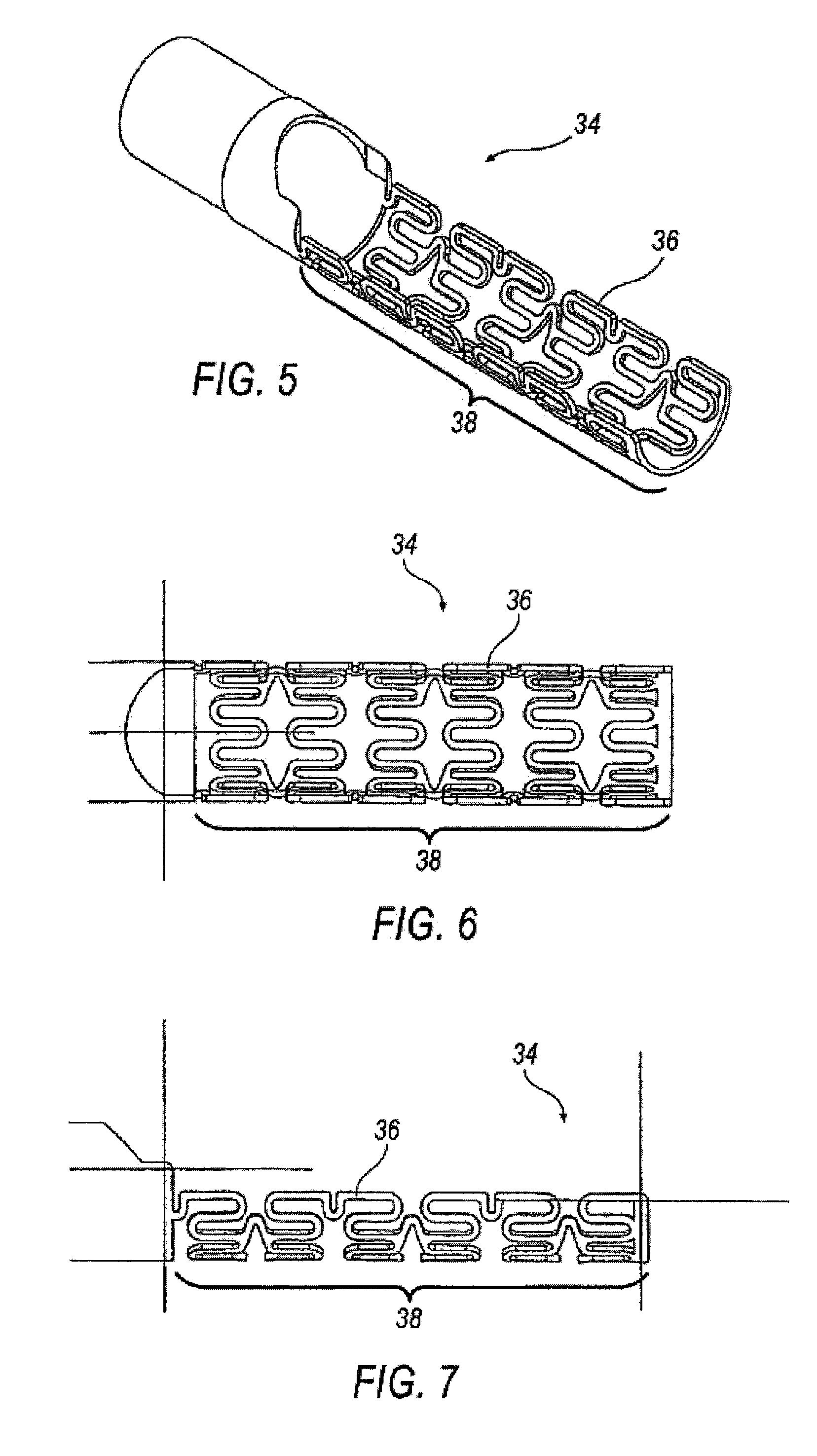Rapid exchange bias laser catheter design
a laser catheter and bias technology, applied in the field of improved, can solve the problems of reduced blood and oxygen flow to the heart muscle, chest pain,
- Summary
- Abstract
- Description
- Claims
- Application Information
AI Technical Summary
Benefits of technology
Problems solved by technology
Method used
Image
Examples
first embodiment
[0050]An alternative embodiment of the housing 12 comprises having at least one section at the first distal end 16. a support structure is support member 34 as shown in FIGS. 5-7. The support member 34 may be used to support the first distal end 16 while providing flexibility without producing failure. The first distal end 16 of the housing 12 may otherwise experience limited torsional and bending strength of the area around the cavity 18 specifically traversing bends having a radius of about 0.75 inches. The support member 34 assists in withstanding the torsional and bending forces when traversing bends of about 0.75 inches, while maintaining aspects of both integrity and functionality. In some embodiments, without limitation, support member 34 reinforces the area around the cavity 18 at the first distal end 16 with struts 36 forming a stent-like pattern 38. Support member 34 is formed from metal, plastic, or combinations thereof, and is at least partially axially disposed around t...
second embodiment
[0051]Referring to FIGS. 8 and 9, a support structure is shown as second support member 40 having a spring-like geometry 42. The support member 40 may be used to support the first distal end 16 while providing flexibility without producing failure. The second support member 40 acts as a backbone for the first distal end 16 of the housing 12. The spring-like geometry 42 permits flexing without causing failure. The height H of the spring-like geometry 42 may be of any height but is preferably below the centerline of the second support member 40. The ramp 20 may be molded over the spring like geometry 42 including having a top coat (not shown).
third embodiment
[0052]Referring to FIGS. 10 and 11, a support structure is shown as a third support member 44. The support member 44 may be used to support the first distal end 16 while providing flexibility without producing failure. The third support member 44 provides variable stiffness along the length of the member 44. Member 44 is the most rigid at rib 46 and most flexible at rib 48. This flexibility is accomplished by having the ribs increase in width W and distance D in addition to decreasing the side of a beam 50 as shown in FIG. 11. Beam 50 tapers from a first wide beam width BW1 to a narrower beam width BW2. A tip 52 having a tip length TL disposed at the distal end support member 44 functions to provide support for the first distal end 16 of the housing 12 while allowing additional flexibility. The ramp 20 may be molded over the spring-like geometry 42 including having a top coat (not shown). The support member length L may be varied depending on user requirements including varying the ...
PUM
 Login to View More
Login to View More Abstract
Description
Claims
Application Information
 Login to View More
Login to View More - R&D
- Intellectual Property
- Life Sciences
- Materials
- Tech Scout
- Unparalleled Data Quality
- Higher Quality Content
- 60% Fewer Hallucinations
Browse by: Latest US Patents, China's latest patents, Technical Efficacy Thesaurus, Application Domain, Technology Topic, Popular Technical Reports.
© 2025 PatSnap. All rights reserved.Legal|Privacy policy|Modern Slavery Act Transparency Statement|Sitemap|About US| Contact US: help@patsnap.com



